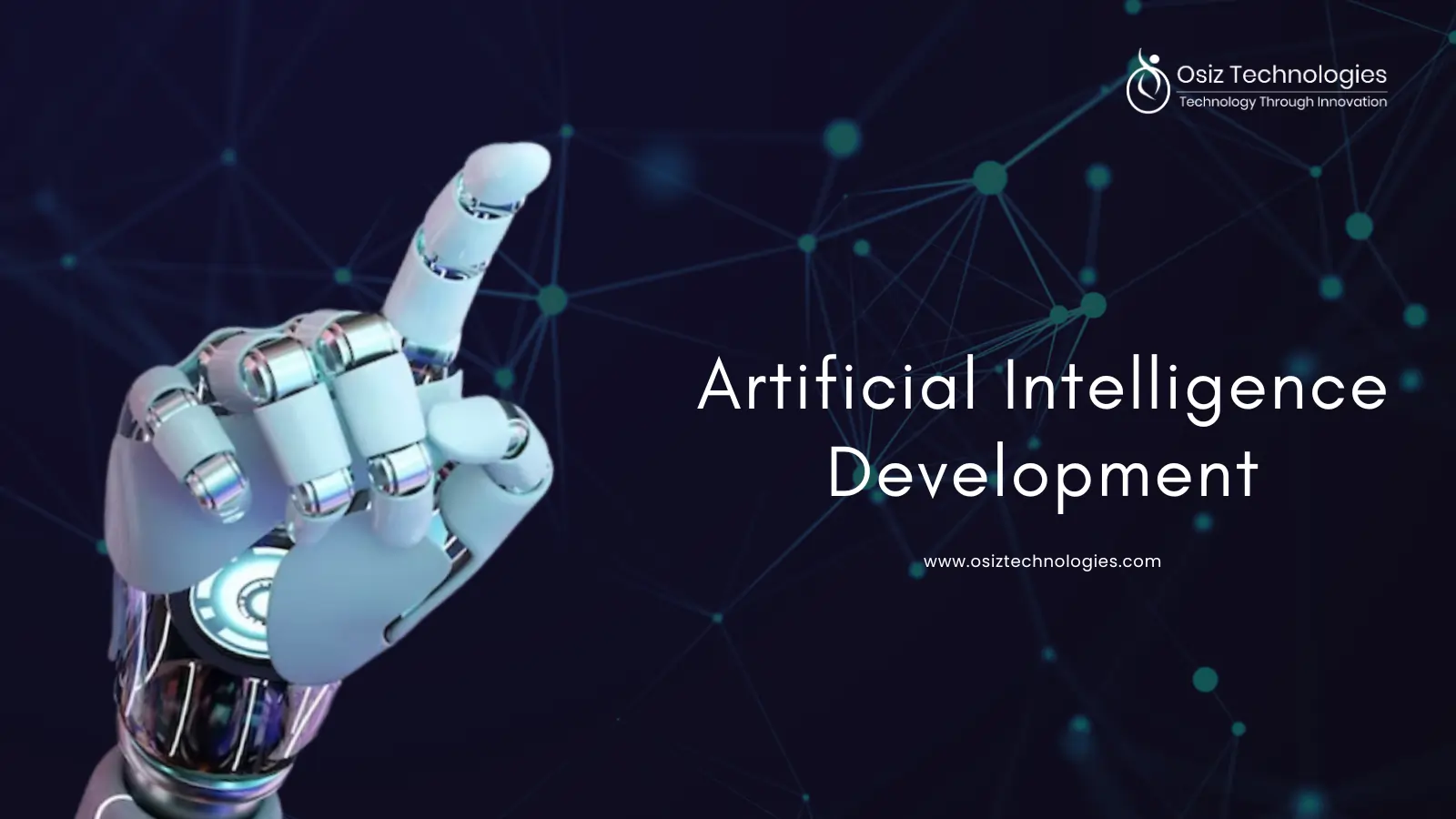Behind every AI system are awesome machine-learning algorithms working like an engine. It allows systems to learn from data, make predictions, and solve complex problems without direct human intervention in the process of programming. It is those machine learning algorithms helping to improve, continuously enhancing, or moving further, towards realization, with careful and thoughtful recognition of the patterns and information for relevant predictions and classifications. Let's have a look at some ML techniques, what is machine learning algorithms types, and their applications.
What Is Machine Learning?
Specifically, machine learning is that branch of artificial intelligence and computer science that is focused on the development of algorithms and models that parse data looking for patterns in the available information and being able therefore to automate the process of human learning with increasing accuracy on the part of the systems.
How Machine Learning Works?
Machine learning operates through three main components, as outlined by UC Berkeley:
Decision Process: Machine learning algorithms are intended to predict or categorize data. Given input data, whether labeled or unlabeled, the algorithm generates estimates to identify patterns within the data.
Error Function: An error function assesses the model's predictions by comparing them against known examples. This comparison helps to assess the model's output correctness.
Model Optimization Process: To improve the model's fit to the training data, the algorithm adjusts weights to minimize the discrepancy between the model's predictions and the actual data. This iterative "evaluate and optimize" cycle continues, with the algorithm autonomously refining the model until it achieves a desired level of accuracy.
Machine Learning vs. Deep Learning vs. Neural Networks
Although the terms "deep learning" and "machine learning" are used interchangeably, there are minute dissimilarities between the two. Machine learning, deep learning, and neural networks are sub-domains in artificial intelligence; however, they have different scopes and methodologies. Neural networks are a subset of machine learning, and deep learning is a further subset of neural networks.
Machine Learning vs. Deep Learning:
The key difference between machine learning and deep learning lies in how each algorithm learns. Deep learning can utilize labeled datasets (supervised learning) but does not necessarily require them. It can process raw, unstructured data (such as text or images) and automatically identify features that distinguish different categories, reducing the need for human intervention and allowing the use of large data sets. As Lex Fridman points out in his MIT presentation, deep learning can be viewed as "scalable machine learning."
Classical machine learning (non-deep learning) relies more on human intervention. Human experts must discover the characteristics that distinguish data inputs, which usually necessitate more organized data for the learning process.
Neural Networks:
Neural networks are simply layers of nodes or ANNs: an input layer, one or more hidden layers, and an output layer. Weights and thresholds connect each node, sometimes known as an artificial neuron. If its output passes the threshold, it fires up the node, and the data passes on to the next layer; otherwise, it doesn't.
The term "deep" in deep learning refers to the layers that comprise a neural network. If a neural network contains more than three layers, then it will be referred to as a deep learning algorithm or a deep neural network, whereas for a simple neural network, it contains only three layers. Deep learning and neural networks have considerably advanced computer vision, natural language processing, and speech recognition.
Machine Learning Techniques
Machine learning models are categorized into three primary types:
Supervised Machine Learning:
Supervised learning, otherwise referred to as supervised machine learning, involves training algorithms using labeled datasets to make them classify data accurately or predict some outcomes. Weights are adjusted as input of different data and fed into the model, and it further fine-tunes its accuracy to avoid either overfitting or underfitting using a process called cross-validation. This method is effective for various real-world problems, such as filtering spam emails. Common techniques in supervised learning include neural networks, naïve Bayes, linear regression, logistic regression, random forests, and support vector machines (SVM).
Unsupervised Machine Learning:
Unsupervised learning, also known as unsupervised machine learning, is a type of algorithm that evaluates an unlabeled dataset and breaks it down into several subsets called clusters. More specifically, these algorithms find hidden patterns and groupings in data without the interference of a human element at hand. It is useful in exploratory data analysis, cross-selling strategies, and customer segmentation, and in image and pattern recognition. It also allows for the reduction in the number of features within a model using dimensionality-reducing techniques such as principal component analysis and singular value decomposition. Other techniques of this nature include neural networks, k-means clustering, and probabilistic clustering methods.
Semi-Supervised Learning:
Semi-supervised learning bridges the gap between supervised and unsupervised learning. It combines a smaller labeled dataset with a larger unlabeled dataset to guide classification and feature extraction. This method addresses the challenge of limited labeled data for supervised learning and is cost-effective when labeling large datasets is impractical.
Reinforcement Learning:
Reinforcement learning is the process by which an autonomous agent learns how to make decisions and take actions within a given environment to maximize acquired reward signals. Interaction with the environment—consequence reward or penalty of what is executed—is the learning experience for the agent. The objective is to learn the best policy—a set of rules to guide the agent's choices in getting the highest possible long-term rewards. The agent learns through trial and error based on experiences; it monitors subsequent states and rewards before correcting its decision-making strategy. In RL, states, actions, and reward functions should be defined for the agent to be trained to come up with optimal decisions over time.
Types of Machine Learning Algorithms
Let’s explore the types of machine learning algorithms that are widely used:
Neural Networks:
Neural networks simulate the way the human brain works with numerous interconnected processing nodes. They excel at recognizing patterns and are crucial in applications such as natural language translation, image recognition, speech recognition, and image creation.
Linear Regression:
This algorithm predicts numerical values based on a linear relationship between variables. For example, it can predict house prices using historical data from the area.
Logistic Regression:
A supervised learning algorithm that predicts categorical response variables, such as "yes/no" answers. It is used in applications like spam classification and quality control on production lines.
Clustering:
Using unsupervised learning, clustering algorithms identify patterns in data to group similar items. They assist data scientists by uncovering differences between data items that may be overlooked by humans.
Decision Trees:
Decision trees are used for both numerical value prediction (regression) and data classification into categories. They use a branching sequence of decisions represented in a tree diagram. In contrast to neural networks' "black box" nature, decision trees are simple to evaluate and audit.
Random Forests:
A random forest algorithm predicts values or categories by combining the results from multiple decision trees, enhancing prediction accuracy and robustness.
Naive Bayes Classifier:
This is a very basic method that is used in classifying different items into various categories. It fundamentally emanates from Bayes's Theorem and assumes independence between the features used in classification.
Support Vector Machine:
The Support Vector Machine is an instance of a supervised machine learning algorithm applied to classification problems. It identifies the appropriate line or border to split the two data groups. SVM works with statistical techniques, unlike logistic regression which involves probabilities.
K-Nearest Neighbor:
One popular algorithm in the machine learning repertoire for classification problems is K-Nearest Neighbor. It classifies a new data point by comparing it to existing data points and assigns it to the category of the nearest neighbors.
Principal Component Analysis:
Principal Component Analysis is a statistical procedure that is very useful when there is a relationship between variables in a dataset. Like in most dimensionality-reduction techniques, the primary objective of the method is to reduce the dimensionality of data, and at the same time, it retains the most relevant patterns or relationships among the variables under study.
Real-world Machine Learning Use Cases
-
Speech Recognition
-
Customer Service
-
Computer Vision
-
Recommendation Engines
-
Robotic Process Automation
-
Automated Stock Trading
-
Fraud Detection
Wrapping Up
Machine learning techniques have revolutionized our approach to complex problems and data extraction. These methods, ranging from classification and regression to clustering and recommendation systems, have proven effective across various domains. As technology advances, machine learning and AI solutions will become even more essential in addressing the challenges of a data-driven world. Looking to develop robust machine-learning solutions? Look no further than Osiz, the best Machine Learning Development Company. Our team specializes in creating reliable, high-performance machine-learning solutions with advanced features. Contact us today to discuss your requirements!
Listen To The Article










